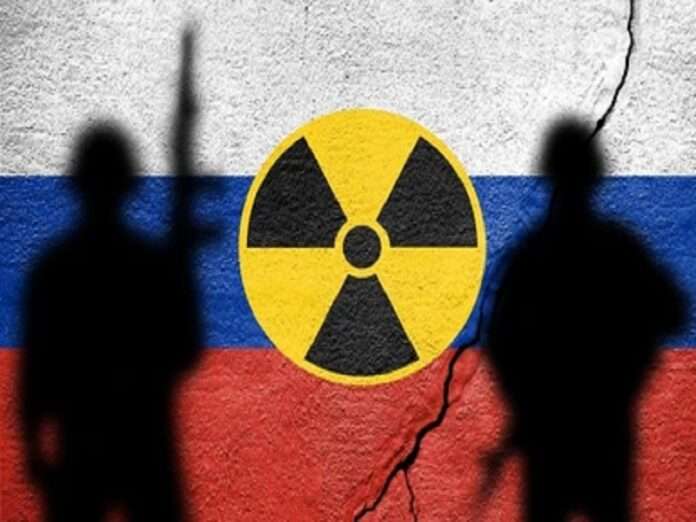Time Magazine claimed late last month that the Biden Administration “never” sought to help Ukraine recapture all of its lost territory from Russia, citing Joe Biden’s former Senior Director for Russia and Central Asia at the National Security Council Eric Green as the authority on the matter. According to him, “We were deliberately not talking about the territorial parameters. That was not going to be a success story ultimately.” It’s factually untrue that the US never wanted to restore Ukraine’s borders.
The public deserves to know what the initial goal was after new Secretary of State Marco Rubio told Megyn Kelly in an interview that the former administration “somehow led people to believe that Ukraine would be able not just to defeat Russia but destroy them, push them all the way back to what the world looked like in 2012 or 2014, before the Russians took Crimea and the like.” Instead of that, Rubio said that “Ukraine is being destroyed and losing more and more territory”, hence the need to end the conflict
Biden’s first speech after the start of Russia’s special operation on 24 February 2022 condemned “changing borders by force” and accused Russian President Vladimir Putin of wanting to “reestablish the former Soviet Union.” The emergency NATO Summit that was held the day after saw them call on Russia “to withdraw all its forces from Ukraine” and reaffirmed “unwavering support for the independence, sovereignty and territorial integrity of Ukraine within its internationally recognised borders”.
On that same day, former State Department spokesman Ned Price declared that “We will not falter in our resolute support for Ukraine’s sovereignty and territorial integrity” and demanded that Putin “order the withdrawal of his forces from Ukraine”. One day later on 26 February, former Secretary of State Antony Blinken disclosed that he authorized “an unprecedented third Presidential Drawdown of up to $350 million (in emergency military aid) for immediate support to Ukraine’s defense” at Biden’s behest.”
The statements that preceded this development make clear that the US’ initial goal was indeed to restore Ukraine’s borders even though officials didn’t talk in detail (at least not publicly) “about the territorial parameters.” This impression is lent further credence by the UNGA Resolution that the US supported a week later that March, which reaffirmed the aforementioned support for Ukraine’s territorial integrity within its claimed borders and once again called on Russia to withdraw.
The G7’s joint statement two months later that May echoed this when they “assured [Zelensky] of our full solidarity and support for Ukraine’s courageous defence of its sovereignty and territorial integrity”. Biden then made this goal explicit in late September while speaking at the UNGA. In his words, “Like you, the United States wants this war to end on just terms, on terms we all signed up for: that you cannot seize a nation’s territory by force.”
Around a week later after four Ukrainian regions voted to join Russia, Biden released the following statement that read in part: “Make no mistake: these actions have no legitimacy. The United States will always honor Ukraine’s internationally recognized borders. We will continue to support Ukraine’s efforts to regain control of its territory by strengthening its hand militarily and diplomatically”. He also commented on the UNGA Resolution that condemned this in early October.
According to him, “the world has sent a clear message in response: Russia cannot erase a sovereign state from the map. Russia cannot change borders by force. Russia cannot seize another country’s territory as its own. Ukraine is entitled to the same rights as every other sovereign country. It must be able to choose its own future, and its people must be able to live peacefully inside its internationally recognized borders.”
Almost a full month later, Biden applauded Ukraine’s second counteroffensive that pushed Russian troops out of the western part of Kherson Region, which followed its success in pushing them out of Kharkov Region in early September. The Washington Post then published a detailed report in late December about these complementary counteroffensives where they quoted Alexander Syrsyky, who’s now Ukraine’s Commander-in-Chief, about the impact of the Kharkov one that he led at the time.
He told them that “Our relationship with all of our partners changed immediately. That is, they saw that we could achieve victory — and the help they were providing was being used with effect.” The Washington Post then reported that US and Ukrainian officials told them that “The Americans, however, were not deeply involved in planning the Kharkiv offensive and learned about it relatively late”. They later revealed that the US played a much greater role in the Kherson counteroffensive in early November.
Preparations began much earlier in July when Ukrainian commanders visited Germany to wargame with their American and British counterparts, who advised them against risking an encirclement by trying to sever Russia’s land bridge to Crimea through Zaporozhye Region. Instead, the Ukrainians were advised to focus on the western half of Kherson Region, which they went later went through with and even relied on US-supplied HIMARS to destroy two bridges across the Dnieper River during that time.
US involvement in the Kherson counteroffensive was important since it came after Russia recognized the entirety of that region as its territory and followed Putin thundering in late September that “In the event of a threat to the territorial integrity of our country and to defend Russia and our people, we will certainly make use of all weapon systems available to us. This is not a bluff.” His words implied a threat to use nukes to defend his claims per Russian doctrine, which the Pentagon took “very seriously”.
That makes it all the more significant that the US militarily assisted Ukraine’s direct challenge to what Russia considered to be its territorial integrity and in defense of which Putin threatened to use nukes. Two years later, award-winning journalist Bob Woodward’s book “War” revealed that the US pressured Ukraine to let Russia’s 30,000-strong group retreat across the Dnieper after assessing that there was a 50% probability that Putin would authorize the use of nukes if they suffered heavy losses.
In early January, the New York Times then reported that “when the chairman of the Joint Chiefs of Staff, Mark A. Milley, suggested in late 2022 that Ukraine should capitalize on battlefield gains by seeking peace talks with Moscow, Mr. Blinken insisted the fight should go on”, which resulted in preparations for summer 2023’s ultimately failed counteroffensive in Zaporozhye Region, the exact same place where Ukraine was advised not to attack a year prior.
In the immediate run-up to that doomed campaign, Milley said after a meeting with the Ukraine Contract Group that “the Ukrainian strategic objectives are to liberate all of Russian occupied Ukraine. There’s a couple hundred thousand Russian troops in Russian-occupied Ukraine. That might be achievable militarily, but probably not in the near term. So what does that mean? That means fighting is going to continue. It’s going to be bloody. It’s going to be hard.”
He added that “at some point, both sides will either negotiate a settlement or it will come to a military conclusion at some point in the future. And we’ll continue to support Ukraine in its fight for its own freedom.” This indicates that his proposal for Ukraine to resume peace talks with Russia was indeed overruled by Blinken, and while he wasn’t sure that the counteroffensive would succeed in its stated goal of “liberating all of Russian occupied Ukraine”, he still pledged the US’ continued support for it.
One can only speculate whether the US would have once again pressured Ukraine against inflicting heavy losses on Russia had that scenario been possible in Zaporozhye like it was a little more than half a year prior in Kherson or if Putin would have really authorized the use of nukes in that event. The reasons for the counteroffensive’s failure are complex and debatable, but the Washington Post attempted to account for this in a two–part series that they published in late December 2023 citing Ukrainian and US officials.
In the context of this analysis about the US’ initial goal in this conflict, it’s sufficient to know that US officials began to shift their rhetoric in the aftermath of that disaster by eschewing talk of Ukraine reclaiming its 1991 borders in favor of repeating the prior vague rhetoric about supporting Ukraine “for as long as it takes”. Considering that Green left his post in April 2023 right before the counteroffensive began, he likely would have had very different conversations than what he told Time Magazine about.
As was proven in this analysis, the US’ initial goal up until the counteroffensive’s failure, which was obvious by the end of summer 2023, was indeed to restore Ukraine’s borders, not only to simply help it survive, keep the West united, and avoid a direct conflict between Russia and NATO. In retrospect and informed by what Woodward’s book since alleged, it appears that Russia’s claims to those four Ukrainian regions in September 2022 and Putin’s implied nuclear threats shortly after changed the US’ calculations.
That would explain why the US reportedly pressured Ukraine to let Russia’s 30,000-strong group retreat across the Dnieper during the Kherson counteroffensive, which policymakers might have considered to be crossing Putin’s so-called red line just enough that they could discredit it for political and soft power purposes but without going so far as to provoke him into retaliating so as to save face and uphold the integrity of his country’s nuclear doctrine.
While it remains unclear whether the US would have replicated this restraint with respect to the Zaporozhye counteroffensive had it not failed and instead achieved a similar level of success as the Kherson one, it can’t be ruled out that the aforementioned speculative calculation would have still applied wherein it would have let Ukraine cross Putin’s red line but not far enough to provoke a nuclear response. It was only after this complete failure that US officials stopped entertaining this possibility.
The enormous stakes involved coupled with Ukraine’s consequent military weakness add further context to why the decision was seemingly made to no longer discuss territorial parameters like before. Accordingly, Green either has false memories of the US’ initial goals in Ukraine or might have wanted to cover up for how Putin’s nuke threats arguably led to policymakers changing them, but what he told Time Magazine was inaccurate in any case and it’s important to set the record straight as was just done.







